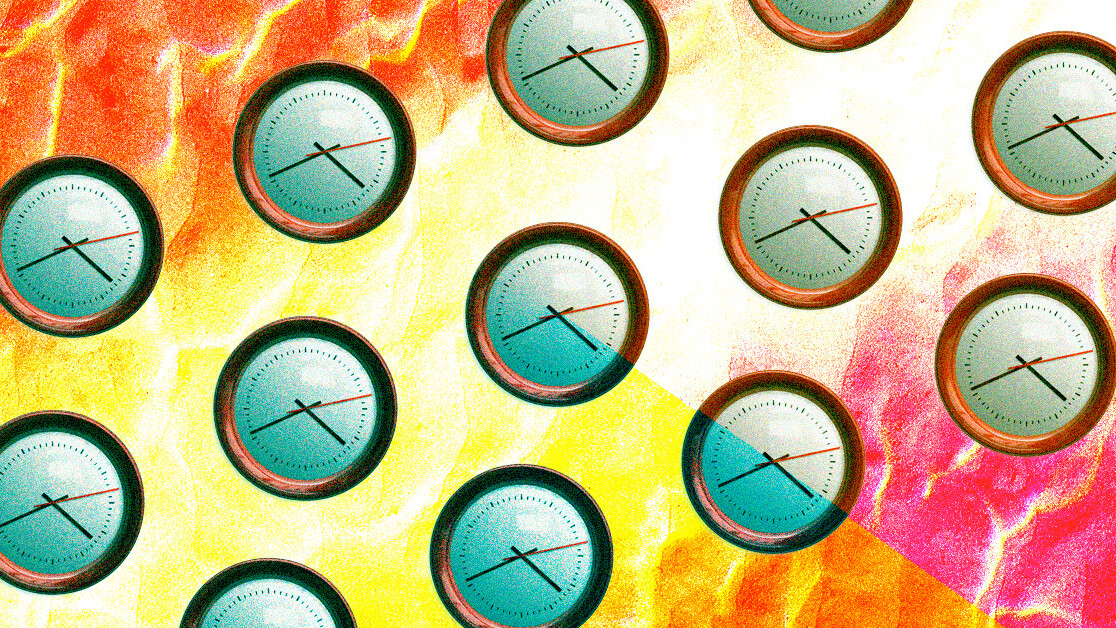
Trying to build good habits can often backfire. Here’s why it’s important to know how habits are formed and when it’s better to stick with a routine instead.
Habits are hot. Self-help articles extol the power of habits and books on the topic sell by the millions. Yet, like many pop psychology topics, the conventional wisdom about the effectiveness and application of habits is frequently outdated, misapplied, or flat out wrong. Building habits to change behavior the right way can be a wonderful tool to improve your life. But false notions about what habits are and what they can do can backfire.
The idea of building a habit is very appealing. The popular notion that tasks can be put on autopilot makes habits sound effortless. Wouldn’t it be great if you could simply make a habit out of doing tasks like exercising, journaling, paying bills, or running a side business? Unfortunately, you can’t. Habits don’t work that way.
What are habits?
According to Dr. Benjamin Gardner, a habit researcher at King’s College London, “habit works by generating an impulse to do a behavior with little or no conscious thought.” Habits are a type of learning. By forming a habit, the brain frees the mind to do other things without deliberation.
As a child, you needed reminding to wash your hands after using the toilet. Children must focus on the task of turning on the water, dispensing the soap, lathering up, and cleaning their hands. As an adult, you do this automatically (hopefully) and you’re able to think about other things as you take the steps to wash your hands.
Only some behaviors can become habits
By definition, behaviors that require concentration, deliberation, or extended effort, are not habits.1 This isn’t just semantics. We shouldn’t try to form a habit out of a task that can never become one. If we do, will be sorely disappointed.
Read: [What science teaches us about breaking bad habits]
When we fail at forming a habit, we tend to blame ourselves, rather than the bad advice we read from someone who doesn’t really understand what can and cannot be a habit.
If behaviors that require conscious thought, like cleaning your apartment or writing in a journal daily, are not habits, then what are they? They are routines. A routine is “a sequence of actions regularly followed.”
To change a behavior you need to understand the difference between a habit and a routine. Otherwise, it’s like using the blunt end of a screwdriver to bash in a nail. It’s possible, but you’re likely to give up or hurt yourself. You should have used a hammer instead.
How do we tell the difference between behaviors that are good candidates to become habits and those best left as routines? To answer that question we need to start with a more fundamental question, “Why do we do anything?”
Like what you’re reading? This article draws on my book Indistractable: How to Control Your Attention and Choose Your Life. it here and subscribe to my newsletter to receive more great articles.
What is motivation?
For years, we thought that Sigmund Freud’s “pleasure principle” is the basis of human motivation. He promoted the idea that behavior is driven by the desire to seek pleasure and avoid pain. Behaviorists like B.F. Skinner popularized the notion that reinforcements and punishments drive conditioned behavior.
But, we now know that motivation is not driven by pleasure and pain. Rather, neurologically speaking, motivation is the desire to escape discomfort. All human behavior, even the itch of desire to do something pleasurable, is in fact prompted by pain. It’s called the homeostatic response.
Our brains get our bodies to do what they want through discomfort. When we’re cold, we put on a coat. When we feel hunger pangs, we eat. Does feeling warm again or eating food bring pleasure? Of course. But that good feeling comes after we’re spurred into action by an uncomfortable sensation prompting us to take action.
The same rule applies to psychological discomfort. When we feel lonely, bored, or uncertain, we act to relieve our emotional disquietude. We might see a friend to relieve loneliness, or watch a show on television when we’re bored. We may look up something online to satisfy our uncertainty — all because we seek to escape these uncomfortable sensations.
The difference between habits and routines
If all behavior is prompted by discomfort, then habits and routines must follow the same rule. How and when we feel the discomfort of doing, or not doing, a behavior is critical to understanding the difference between habits and routines.
Recall that part of the reason people find the idea of building a habit so appealing is the notion that they can put unfun tasks on autopilot. Tasks like paying bills or doing the laundry annoy us. They hang over our heads until the pain of not doing them gets to be too much. However, if some magic laundry-folding fairy appeared and told you not to worry about the task, you’d happily go about your day. Turns out your brain comes built in with just such a magic pixie, it’s called procrastination.
When we procrastinate, we tell ourselves we’ll avoid the task for later. Doing so is a telltale sign the task is a routine and not a good candidate to become a habit.
Imagine intending to wash your hands and the water suddenly shuts off. If you’re in the habit, not doing the behavior would feel strange, even uncomfortable. Even if the magic habit fairy told you your hands had been cleaned and there was no need to wash them, it would take you several days, if not weeks, to undo this habitual behavior.
I recently experienced just such a predicament when the water to my bathroom sink was shut off because of construction in my building. I needed to use the kitchen sink to wash my hands for a week. Even though I was fully aware that the bathroom sink wasn’t going to work, I kept turning it on day after day out of habit. Every time I lifted the faucet handle and no water came out, my habit was interrupted and I’d get annoyed. I knew the faucet wouldn’t work, but I kept attempting to do the behavior with little thought.
A habit feels uncomfortable when we don’t do it, exactly the opposite is true of routines. This is where people get into trouble confusing habits and routines. They expect routines to be as effortless as habits, while the only thing about routines that’s easy, is how easy they are to skip. Not doing an effortful task, like doing the laundry or writing in a journal, is easy to forget because such behaviors are not a habit, they are a routine that requires effort.
How habits are formed
Some self-help books claim habits form by simply providing a reward after a cued behavior. In the behaviorist tradition, they base their claims on research showing how a lab animal, like a mouse, can be taught to memorize a path through a maze in search of food. However, while this form of learning, called operant conditioning, works well for a mouse in a maze, the model is often misapplied for humans in the real world.
Operant conditioning can be effective when a scientist in a lab coat sets up the task for test subjects to complete. However, in life, we are thankfully not trapped in cages and mazes, we must moderate our own behavior. Unfortunately, we must be scientists attempting to design our own actions. Offering ourselves extrinsic rewards makes conditioning our own behavior very difficult. It can be exceedingly hard to resist cheating. Setting up arbitrary prizes risks overemphasizing completing a goal for the sake of the reward, instead of learning to enjoy the process.
Start with a routine
First we have to accept that only certain kinds of behaviors can become habits, and that certain behaviors will never become habits. Only then can we take the first step to change our repeated behaviors. For those actions that can turn into habits, we can begin by making them into routines. As long as we know the difference between a habit (a behavior done with little or no thought) and a routine (a series of actions regularly followed) we can plan accordingly and not be disappointed.
Hold the time
Since we can’t count on routines to happen automatically the way habits do, we need to make sure to allocate time for them. Many people go through their days with aspirations to accomplish a list of tasks. But without dedicating time on their calendars to do them, they never get everything done.
Setting an “implementation intention,” which is just a fancy way of saying that you will plan what you are going to do and when you are going to do it, has been shown to boost the likelihood of following through.3 Without a dedicated time reserved for your new routine, chances are it’ll never get done.
If you’d like to know more about how to properly schedule your day, read this article and try this free online schedule maker tool you can use to plan your day.
Welcome discomfort
It’s important to expect that learning and repeatedly doing a new behavior requires effort. Expect discomfort and know that you’ll have to push through it. Along with setting expectations that new routines won’t be effortless, you can learn coping techniques to deal with discomfort in a healthier manner.
For instance, you can learn to re-imagine the difficulty in a positive way by telling yourself a different story. Instead of focusing on how hard writing or exercising every day can be, think of the difficulty as part of the journey. Know that everyone who has ever made a routine out of this behavior has struggled at some point.
If you desire to go to the gym regularly but dislike exercise, find ways to see it differently. Envision every drop of sweat as a sign your body is getting stronger. Learn to see the burn as tiny muscle fibers getting better at doing their job, as your body rises to the challenge. Perception is a matter of perspective, no matter the routine, you can choose to re-imagine your discomfort as a good thing. This may seem like a stretch for someone who hates exercise, as I once did. But it’s useful to remember that many people have learned to love the very same difficulty you despise. If they can see it differently, why can’t you?
Pre-Commit
Before a behavior can become a habit, it needs to become a regularly performed routine. But given how effortful routines can be, it’s far too easy to skip a difficult task. Thankfully, making a pre-commitment is a fantastic way to ensure you do what you say you will do.
For instance, if writing or exercising daily is a routine you want to adopt, finding someone to hold you accountable will increase your odds of success. Sites like FocusMate, make finding someone to work alongside easy (note: I liked FocusMate so much I decided to invest in the company). You can also pre-commit to a routine by using software like Forest on your phone and Freedom on your computer to prevent distraction and keep you on task.
Do it right
By not expecting every aspiration to become an effortless habit, you increase your odds of success. If it’s the right kind of behavior, one that can be done with little or no conscious thought, the routine can become a habit.
It’s important to remember not to try and turn hard-to-do behaviors into habits. Doing so risks frustration and failure. Instead, accept that it’s perfectly fine that some behaviors will remain routines and expect them to never become effortless. By focusing on forming solid routines through the steps outlined above, you’ll have a better chance of sticking to what’s important to you, while increasing the odds that some routines may blossom into habits.
This article was originally published on Nirandfar.com by Nir Eyal. You can read the original article here.
Get the TNW newsletter
Get the most important tech news in your inbox each week.




